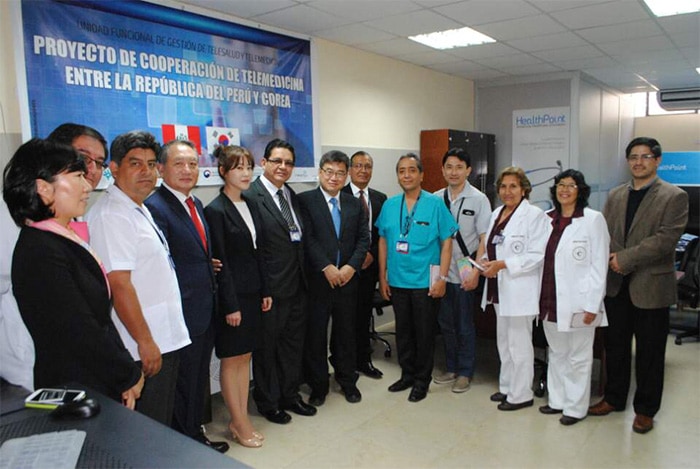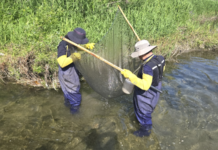
Remote medical checkups, developed using Korean information and communications technology (ICT), are making inroads at the National Hospital in Lima, Peru, on Nov. 16.
The Ministry of Health and Welfare announced on Nov. 16 that remote medical checkups, based on ICT developed in Korea, have begun in Peru between the Cayetona Heredia Hospital and three local maternity health centers located in the Lima suburbs.
The project is the first time that Korea’s remote medical systems are being set up in Latin America. As the need for remote medical services across the region increases, the Korean government expects that its telemedicine and related systems will have a greater chance of contributing to improving accessibility to healthcare services for Latin Americans.
The project launched after the president’s visit to Peru in April 2015, and is based on a memorandum of understating (MOU) signed between the Gacheon University Gil Hospital and the Peru Cayetona Heredia Hospital. The Korea Health Industry Development Institute (KHIDI) provided partial support for research into the Peruvian telemedicine market and model development, and the pilot project was initiated by the Gacheon University Gil Hospital. The Cayetona Heredia Hospital provided practical medical institutions, business sites and medical and administrative personnel.
The Gacheon University Gil Hospital signed an MOA with the Institute of Management of Health Services (IGSS) in Peru and completed the construction of remote clinics and on-site education locations in Peru.
This project is a cooperative telemedicine model that aims at conducting obstetric clinical consultations, affiliated with specialists at the Cayetona Heredia Hospital, metropolitan hospitals and three maternity health centers around Lima. These remoter areas are vulnerable areas that lack specialists. There are test operations at remote clinics covering periodic prenatal care, obstetrics and gynecology, for 90 mother-and-child pairs.
In detail, specialists from the Cayetona Heredia Hospital carry out work at the remote cooperative clinics, checking on the progress of patients with high-risk factors. This includes antenatal care and periodically managing patients at the maternity health centers. In addition, a specialist would decide if the patient should be transported or transferred to another hospital, or if they could implement remote medical consultations at the maternity health center.

A telemedicine center is opened in Peru.
The opening ceremony was held on the morning of Nov. 16 at the Cayetona Heredia Hospital in Peru. The ceremony of a telemedicine center was attended by representatives from the health ministries of both countries, from the Cayetona Heredia Hospital, from the Embassy of the Republic of Korea in Peru, from the Korea Health Industry Development Institute, from the Gacheon University Gil Hospital, and from U-SHIN C&C, a telemedicine company.
During the opening ceremony, a telemedicine session was carried out between doctors. They transmitted medical information and ultrasound images of a patient at the Santa Luzmila maternity health center in Tupac Amaru using a remote video system. Minister of Health and Welfare Chung Chinyoub said, “I hope that Korea’s outstanding medical technology will contribute to increasing healthcare accessibility for the Latin American people, who have difficulty living in remote areas due to the large land area, alpine areas, and Amazon region, as a percentage of population.” “The Ministry of Health and Welfare is preparing telemedicine pilot projects, not only in Peru, but also in the Philippines and China, too, so that Korea’s medical technology will be praised and utilized all around the world,” he said.
By Wi Tack-whan, Son Gina
Korea.net Staff Writers
Photos: Ministry of Health and Welfare
whan23@korea.kr























